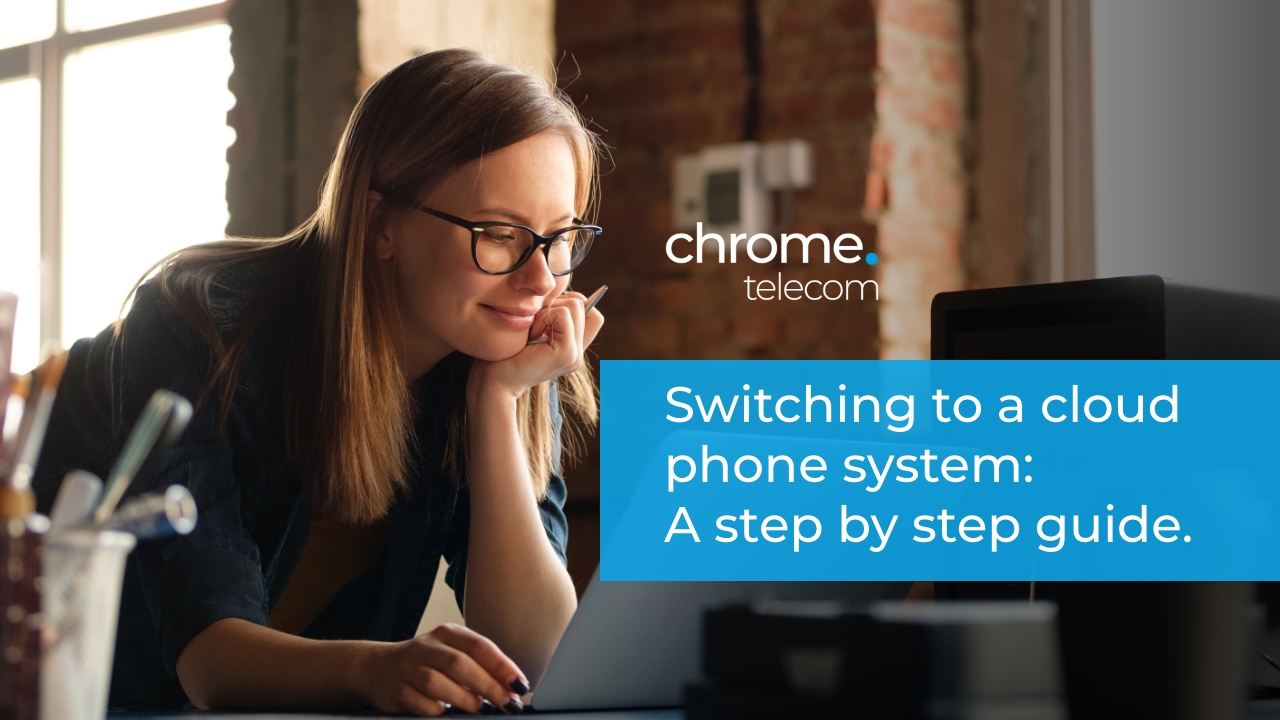Switching to a cloud-based phone system has never been easier.
Read on for a step-by-step on switching to the cloud, as well as the main benefits of cloud vs. on-premise phone systems.
What is a cloud system vs on-premise
The main difference between an on-premise vs cloud system is where they live. As the name suggests, an on-premise telephone system lives on your business premises. These systems are hosted in hardware that’s stored somewhere in your office.
A cloud (also known as “hosted”) phone system is different. It’s hosted in data centers far from your site, and you access it online. This means you can use it on any device, anywhere with an internet connection. Many businesses are making the switch to cloud services for a number of reasons. Let’s take a look at why!
The benefits of a cloud phone system
The first and possibly the biggest benefit to using a cloud phone system is that it provides greater flexibility than on-premise. With a hosted phone system, you can add as many users to your subscription as required, so you’re never tied to one telephone package. Also, as your calls are routed via the internet, you can also make them from anywhere, providing greater flexibility for remote and mobile working.
Cloud-based telephone systems can also speed up productivity. You can have your contacts saved to the cloud and easily accessed from anywhere. You can make calls from whatever device you have the app installed on, with pop-up call and click-to-dial windows open on your screen to make workflow seamless and efficient.
Finally, cloud phone systems are highly resilient. On-premise hardware is vulnerable to wear and tear or disaster. Cloud services, on the other hand, are as reliable as your internet connection.
Switching to the cloud
Switching to a cloud system is also vastly easier than installing an on-premise one. You don’t need any call-routing hardware, you just need the software and phone handsets. It’s all ‘in the box’. Chrome can help you if you are looking to switch to the cloud, and you can expect us to take you through these steps:
1. Check your internet connectivity
Let’s start with the basics. A cloud phone system runs on the internet. You might have heard the name VoIP, which stands for voice over internet protocol. Well, you really need to make sure the connectivity you’ve got is up to scratch.
You need the right bandwidth and speeds to handle all those calls, as well as the other work you do that relies on the internet. There are lots of options out there, from FTTP to high-powered leased lines.
Here at Chrome, we specialise in providing connectivity and we can help you make the right choice. The bandwidth and speeds you require will depend on factors like your size, and the type of work you do. We’ll look at your business needs and tailor our recommendations to you.
2. Setting up your cloud service
Paying for a cloud phone system is pretty straightforward. You simply pay a licence fee for each user based on whatever system you’re using. If you need to add new users, it’s incredibly easy and just takes a few clicks. Either way it’s a subscription model, so you get all the features you need without big capital expenditure.
After that, it’s just handsets – but even these are optional. Cloud allows you to make calls on your smartphone, tablet, laptop or desktop thanks to the softphone feature. A softphone is software that allows you to use any device as a business phone.
If you do need handsets, we have models for every need. This includes everything from simple desk phones right up executive models with in-built Android tablets. We’ll also send them pre-configured and ready to go – it could hardly be easier!
3. Additional features
Of course, there’s more to a modern phone system than just calls. There are all sorts of additional features that can improve the quality and efficiency of your work. Our final step is all about considering which ones you’ll need!
First off, call recording. This does what it says on the tin – it records your calls, allowing you to play them back whenever you need. In some sectors you’ll need it for compliance purposes. But it’s useful in any business with active phone lines. It’s great for training, complaint resolution and quality assurance.
The next one to consider is call analytics, which is all about making calls as efficient as possible. Our analytics suite offers deep insights into your call KPIs, from average duration to waiting times. It will automate all this, sending you reports as well as displaying real-time info on a live wallboard. This is great for understanding performance more deeply, allowing you to manage resources in the most efficient way possible.
Finally, it might be worth considering phone system-CRM integration. This can make call-handling so much easier. For incoming calls, your screen will display who’s calling, along with any notes or records you have on that caller. And for outbound calls, you can simply find the number in your database and click to dial. These features shave valuable seconds off every call. Add those seconds up over time, and it makes a huge difference.
How Chrome can help you
Here at Chrome, we make switching to a cloud phone system easy. We’ll go through these steps with you, get to know your business, and tailor our advice to you. To speak to a member of staff about making the switch, give us a call on 03333 212 707 or head to our contact page.
